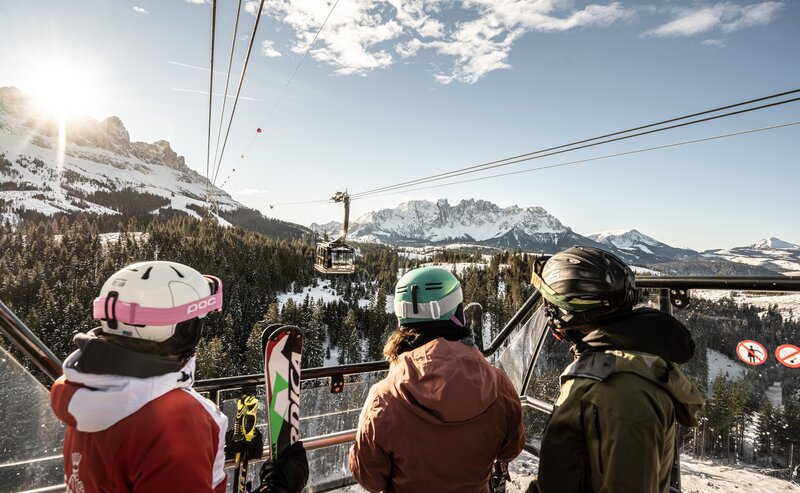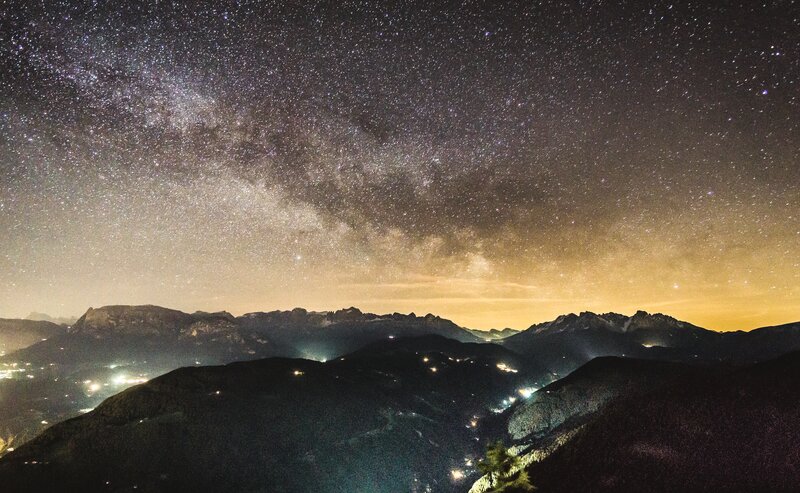Green energy at every level
The Obereggen ski area and the Ski Center Latemar are not just 5-star ski resorts, ideal for families and children: they also stand for a natural landscape that is quite simply unique and deserving of protection.
This has long been recognised by the local pioneers, residents and local service providers. Treating nature responsibly – this is their guiding principle, reflected in their urban planning decisions and energy recovery concepts. These actions are all taken with an eye to the future.
Change begins in the mind
In the early 1970s a number of young pioneering spirits from Ega saw the potential for the winter use of the meadows where animals grazed in the summer. Working on their own, they gathered sufficient know-how and capital to create a brand-new lift system, and with it a new skiresort called: “Obereggen”.
And thus they also established the “Obereggen values”:
1) Use the potential of natural features in dialogue with the environment.
2) Exploit local resources with high-quality infrastructures and pay attention to balance and energy recovery.
3) Do not think in terms of maximising value creation, but rather in terms of energy circuits.
Public transport
Since Obereggen opened to guests, its infrastructure has been constantly improved and optimised. The idea is that of “soft” travel: in practice this means that the villages in the Val d’Ega enjoy daily hiking bus connections in summer, while in winter free ski buses ensure easy, low-impact arrivals and departures.
Chipping in: district heating
While, at the beginning of the Obereggen story, some 500,000 litres of heating oil were being consumed each year, in the meantime usage has now dropped to exactly zero! This is because, since 2007, Obereggen has been heating itself via its own remote heating system. Regional biomass is used as a fuel, in other words - wood chips.
The Carezza Forest, covering the entire Val d’Ega, has for centuries been used by local woodworkers and joiners as a source of raw material. Timber production produces large amounts of offcuts, i.e. wood chips. These are converted directly into heat energy in the remote heating system and used to heat water. This hot water then flows through pipes at a temperature of 80°C to surrounding businesses.
The heads of this trend-setting energy recovery system also work in these enterprises, having invested in the heating system on their own initiative and with their own money. Their incentive? Mindfulness and vision.
Low on emissions,
high on (heat) recovery
At 20 mg/m³, Obereggen is far below the legally permitted emissions level of 70 mg/m³. To achieve this, care was taken to integrate a particularly high-quality fine-dust filter into the district heating system: the technical terms are multi-cyclone filters, electrostatic filters and condensation systems. Heat recovery systems have also been installed in all buildings at the valley station. The aim is to save even more energy and ensure that energy circuits are used to the full.
It is also worth mentioning that, in addition to the local heating system, local hydropower provides a “green energy source”.
No waste is the motto. As a consequence, forests, hiking trails and sections near the slopes are regularly cleared of rubbish.
Oberholz: geothermal energy here too
On high, at 2,096 metres above sea level, can also be found another distinctive architectural feature: the Oberholz mountain hut. This is steadily heated using natural, namely geothermal, energy. Pipelines bring the heat upwards via boreholes to the warmer strata where it is fed into the hut.
Thinking about future generations
A system of energy circuits has thus developed between the white limestone rock formations of the Dolomites around Obereggen to ensure the resort does not stand on the shoulders of Mother Nature, but rather works with her to create energy usage systems for the future. Because, when pioneers change the world, they know that their children will live there too.





















